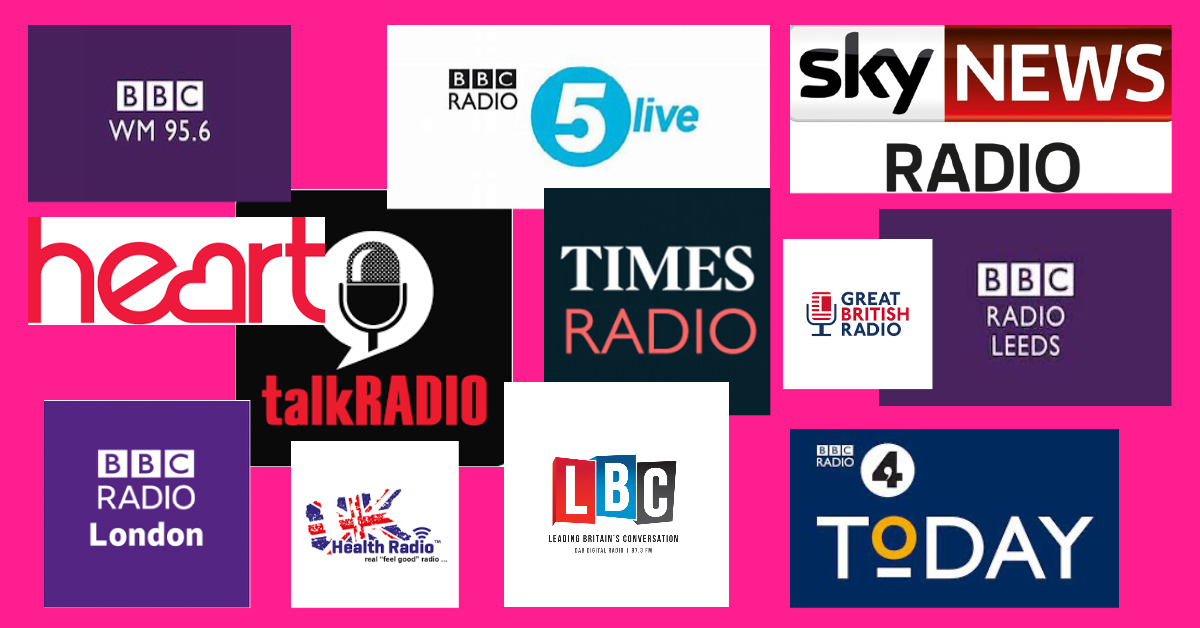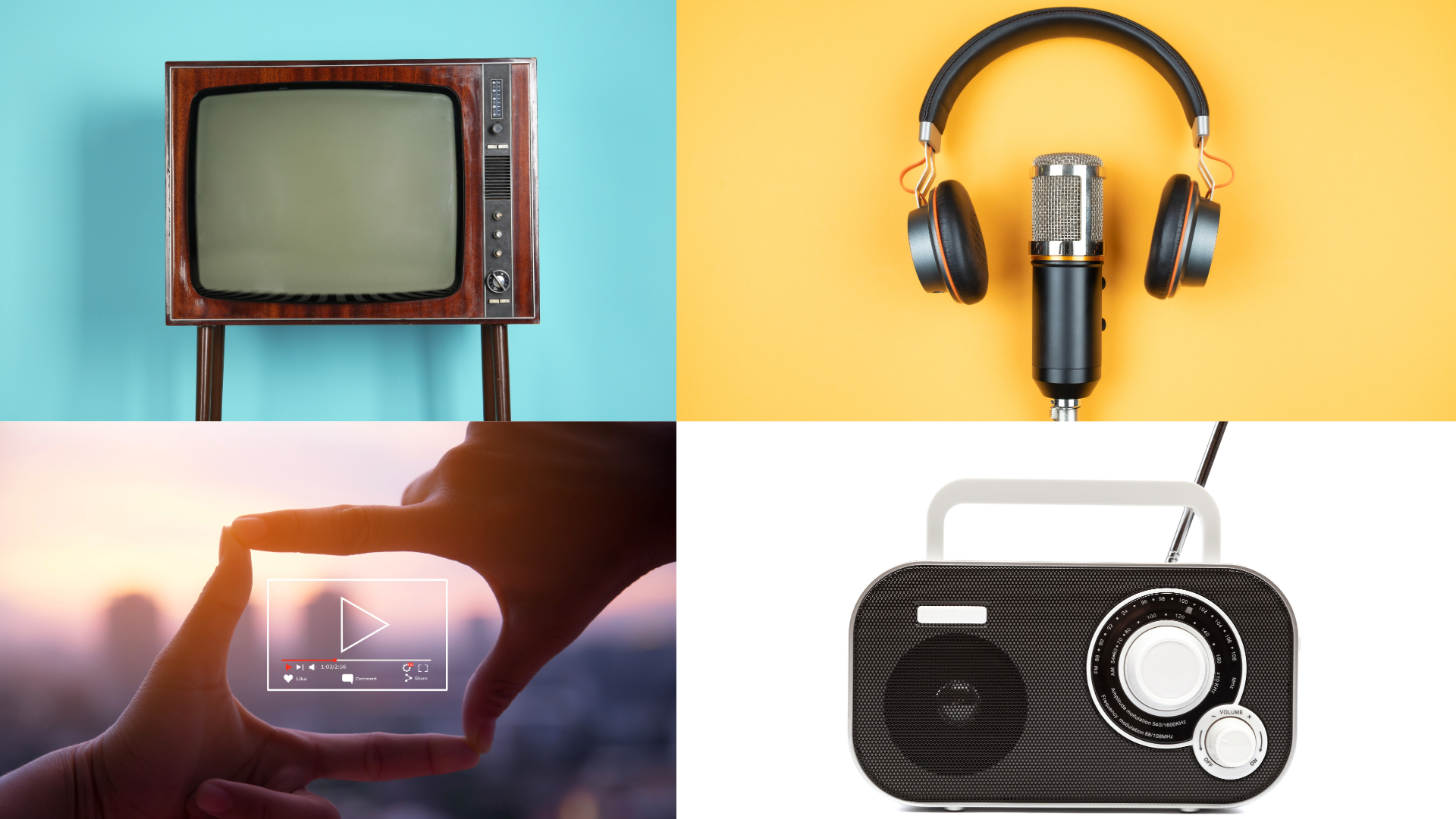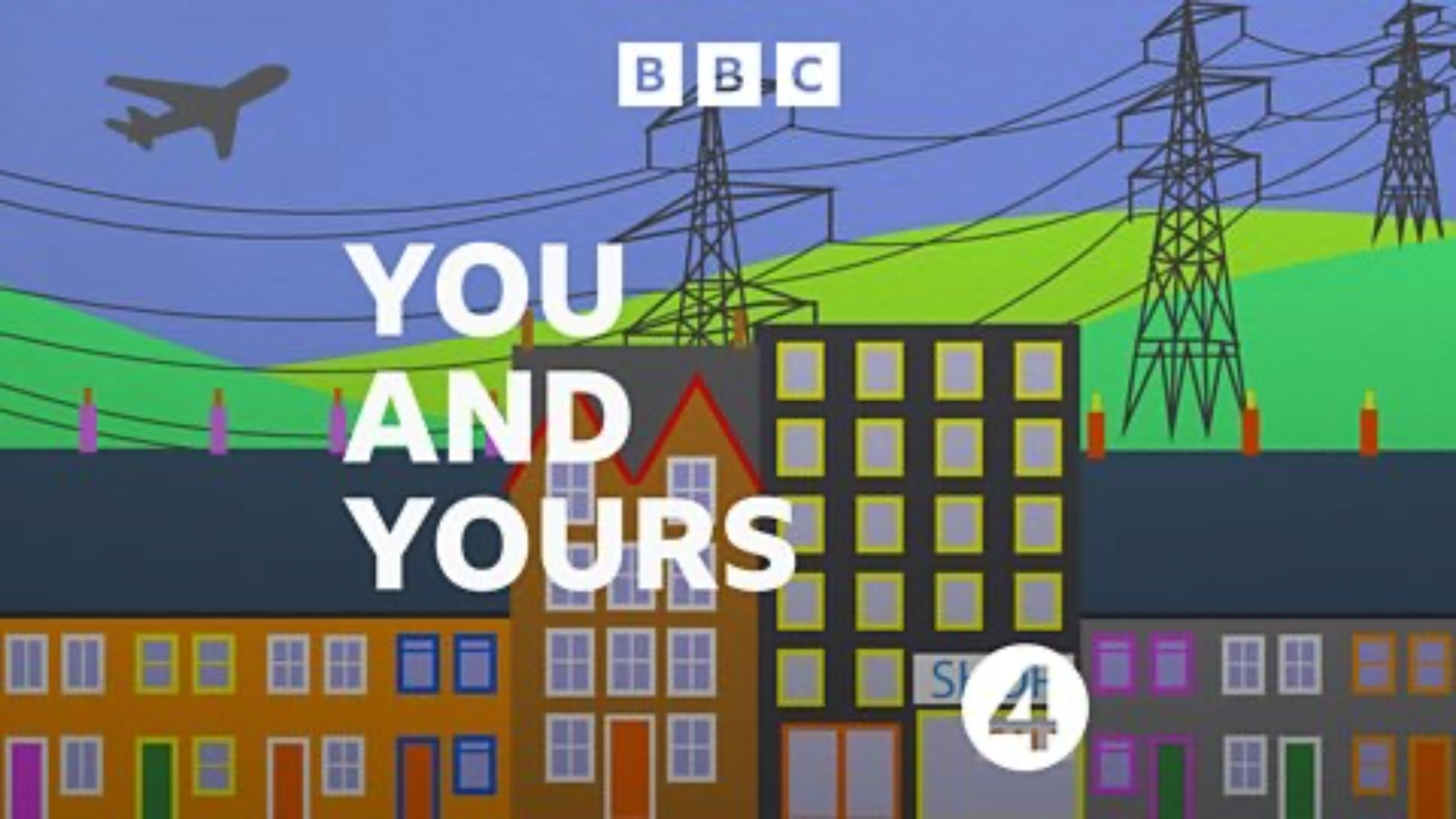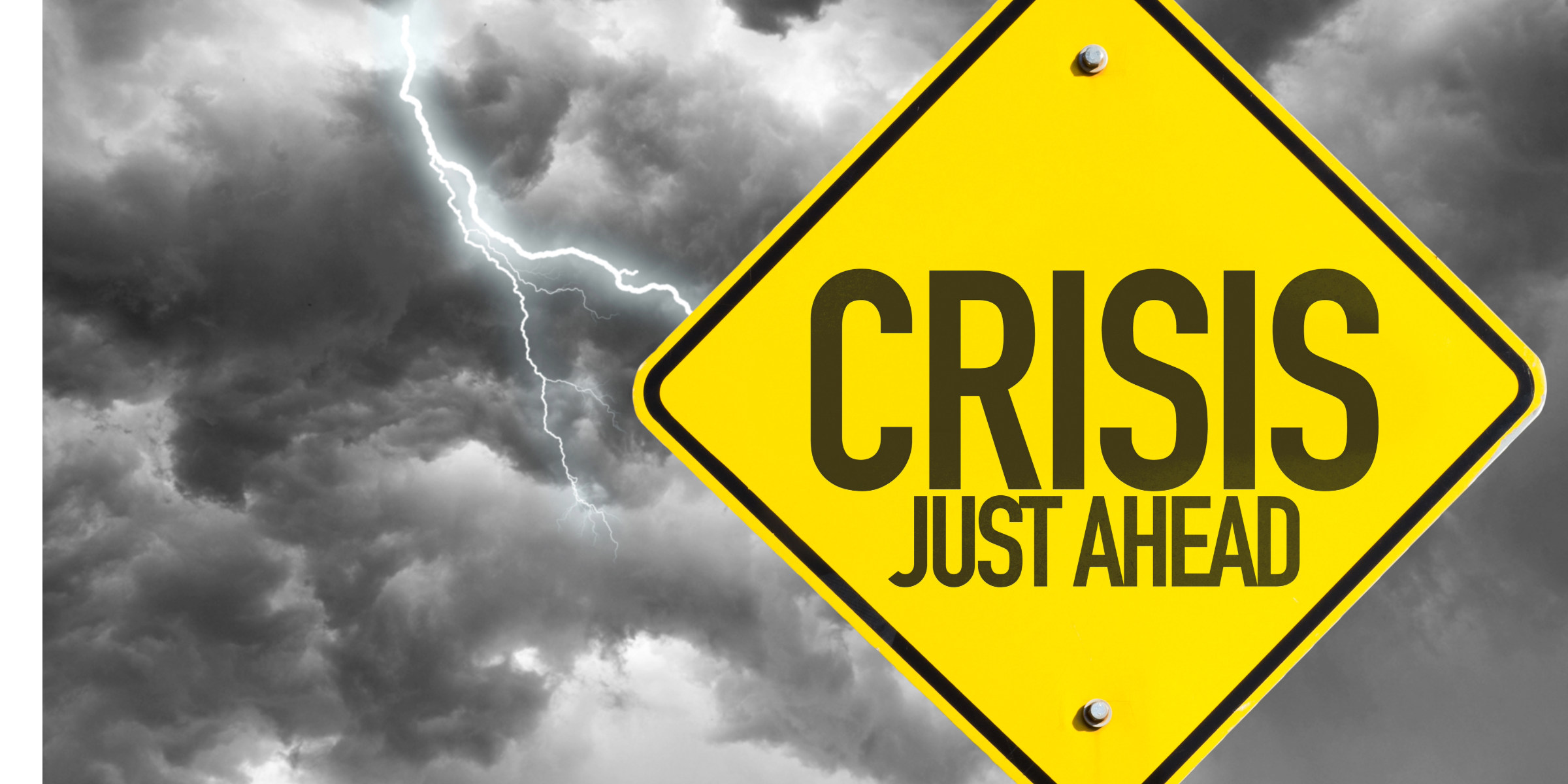In the UK, the world of radio is divided into two sectors, the BBC and commercial stations. On the basest level the differentiator is money. The BBC, or, to use its full name, the British Broadcasting Corporation, is public service broadcasting, primarily funded by license payers’ money. In contrast, commercial radio relies totally on advertisers. In this guide we’ll explain what a commercial radio station is and how it differs to the BBC. We’ll also share the advertising and PR benefits for each type of broadcast station and plenty of insider knowledge.
Tailoring content for radio
In terms of broadcast PR however, this is just the start. Understanding the difference between public service broadcasting and commercial broadcasting runs much deeper. For a truly effective and targeted radio PR campaign, you need to understand the different audiences that each attracts, and the rules and regulations that guide both sectors. Only then can you successfully maximise coverage on radio, attracting the coverage best suited for your client or brand.
BBC and commercial radio are both currently in a state of flux. This was accelerated thanks to the Coronavirus pandemic but has been evolving for a number of years. This blog will assess both sectors, to help guide you.
Looking back at the BBC
The BBC, or Beeb, as it’s sometimes colloquially known, is the world’s oldest national broadcaster. In terms of employee numbers, it’s also the largest. Set up in 1922, the corporation operates under its agreement with the government’s Secretary of State for Culture, Media and Sport. About a quarter of BBC revenue comes from its commercial subsidiary, BBC Studios, which sells BBC programmes internationally and distributes the English language news services found on BBC World News.
The BBC has been undergoing financial cutbacks for around 20 years, exacerbated by the license fee freeze in 2010, but more recently in line with the corporation’s efforts to reinvent its output to compete more effectively with streaming services such as Netflix or Prime, and to attract back younger audiences. We’ll look at the advantages and disadvantages of this below.
The birth of commercial radio in the UK
Commercial radio preceded the Beeb by two years. In what was the first public radio broadcast in the UK, the famous Australian opera singer Dame Nellie Melba, sang into a microphone, sponsored by the Daily Mail, broadcast by the Maroni Company, from a high powered transmitter at its research station in Chelmsford in Essex.
However, it wasn’t until the 1970s that the first independent commercial stations were licensed. Between the first transmission and then, listeners have been able to pick up shows from foreign commercial stations such as Radio Luxembourg, and then pirate stations like Radio Caroline. Legally however the BBC had had a monopoly.
Key differences between BBC, public broadcast radio stations, and commercial radio
It’s worth noting some of the fundamental differences between the two sectors.
1.Branding
One major difference between commercial radio stations and BBC public service broadcasting stations is that the BBC is much stricter when it comes to brand mentions. The BBC has Producer Guidelines, that its journalists must adhere to. And commercial stations have advertisers who won’t want to pay out for an advert, if they see another brand getting air-time for free.
Nearly all journalists understand that when it comes to PR generated content there is a deal to be done. They know that brands won’t pay to come up with that content, unless they get a mention in return. But what you get can vary.
Branding on BBC stations
In practise BBC radio stations are generally stricter than their commercial counterparts and as a guideline will only permit one brand mention during the course of an interview. Push that boundary too much and you’ll find a live interview might be curtailed and any mention of the brand removed in a pre-recorded chat. This is a key difference between the BBC and commercial radio stations.
Worse than that, if a spokesperson sounds too much like an advert they won’t be invited back on that station again. Every journalist has a black list and you don’t want to be on it because you’ve over egged the pudding!
Branding on commercial stations
Larger commercial stations, such as Heart or Capital, are not much more giving. They want well known spokespeople who are likely to be celebrities, for their live interviews. Again, a deal is to be struck. You can get one or two brand mentions, but more often than not there will be a requirement for the celebrity spokesperson to talk about more than just your PR story.
When you want as much branding per interview as possible, smaller commercial radio stations are your best bet. When we say smaller, we’re talking about stations that are big enough to be monitored by the listening body RAJAR, and with a listener reach of at least 50-thousand people. They still have advertisers to answer to, but in practise they are a bit more flexible.
Hyper local stations are also worth considering if brand mentions are top of your list of requirements. They are too small to be monitored by RAJAR and have an audience of under 50-thousand. Typically they’re run by a skeleton staff who are sometimes, story depending, willing to run a PR generated, syndicated interview.
2. Audiences
Broadcast is broad by name and broad by nature. Therefore, talking about radio stations with particular demographics is a huge generalisation. So, loosely speaking, and of course there are exceptions, this is how we feel radio listeners are segmented:
BBC regional radio stations
Around 60% of the BBC’s 39 local radio stations’ listeners are over 55. According to the BBC (https://www.bbc.co.uk/commissioning/radio/local-radio/) nearly 50% of them are classified as C2DE, meaning they’re likely to be non-working, perhaps pensioners, casual or unemployed workers with state benefits. There has been a big emphasis on community and local news on these stations because that’s what the BBC thinks interests these audiences.
BBC Local Radio however is under review and there are controversial plans for programme sharing between stations, as part of ongoing cutbacks. In our opinion, this could be good and bad for broadcast PR. Programme sharing would mean less requirement for very local stories, which, unless you have research which is broken down to cover different geographical areas, can be challenging. But at the same time there will be fewer programmes to target. Once you’ve secured an opportunity you will enjoy a larger audience, because your story will be going out across multiple regional radio stations, but it will be more competitive to get there.
BBC national radio stations
As they say, there is something for everyone. BBC national radio stations are different from local BBC radio stations, but also eachother. In terms of PR coverage, we get the most on BBC Radio 1, Radio 5 Live and Radio 4. Radio 1, targets 15-29 year olds, with mainly music, but they have their youth orientated news bulletins and longer Newsbeat slots too.
Radio 4 has mainly back to back, predominantly talk programmes, interspersed with drama, comedy and panel debates, aimed at a more mature audience. In between we find there are opportunities on Radio 5 Live. Its news programmes are hard hitting and fast moving; they don’t often take a research-based story, but they do appreciate the analysis of an expert speaker.
Perhaps because they are money-can’t-buy-opportunities, clients often value a BBC interview above other opportunities. Latest radio industry listening figures however show in general they are in decline and that commercial radio is getting a slightly bigger bite of the pie and enjoying record figures. The BBC however says it’s gaining with the number of listeners who access their audio content through the BBC Sounds app.
National commercial radio stations
For many years the BBC’s talk stations only had competition from LBC – and that only became available nationwide in 2014. LBC describes itself as a talk and phone in radio station. It’s presenters have strong opinions – and often so do the listeners!
But more recently new stations have been set up, giving LBC a run for its money. They include Times Radio, which was set up in 2020 and now boasts an audience reach of 554k. Its audience is similar, if slightly younger, to The Times newspaper’s readers.
TalkRadio, set up four years earlier in 2016, enjoys a larger audience of 840, 000, attracted by the station’s controversial presenters including Piers Morgan, Jeremy Kyle and Sharon Osbourne.
Read more about Times Radio in one of our other blogs, here: https://shoutcommunications.co.uk/blog/small-talk-with-times-radio/
GB News meanwhile, describes itself as “Britain’s news channel”. The station is a simulcast of the television channel of the same name, the presenters of which are often controversial, nationalistic and politically right leaning. Really there is something for everyone here!
Large commercial radio stations
According to the radio listening body RAJAR commercial radio is enjoying its biggest audiences ever. A single pre-recorded interview can often be syndicated across a number of stations in several areas. But, a pre-recorded interview is likely to be cut down into short news clips and the branding or key message can be easily dropped.
These are music-based stations, so a live interview is rare and would require a celebrity spokesperson. Even then the station will not just talk about your PR story. We always do a deal so that there is a mention of the PR campaign, but the presenters will want to talk to the celebrity about other things too.
They reach a mass audience, but larger commercial stations can be segmented too. Heart for example, says 40% of its listeners are aged between 25 – 44 years old, and 59% of them are female.
3. Types of stories
Not all audiences are interested in the same stories, which is why we are very specific and tailor our press releases to different radio stations accordingly.
At the start of every radio day, we ask our clients want they want to achieve from the campaign. It might be brand awareness, or the communication of a more complex key message, or perhaps there’s a call to action. We want to know who they’re trying to target and what they want them too do once they hear the story.
If the aim is to reach a general mass audience then we will aim for the greatest reach possible. That means encouraging large commercial radio stations and Sky News Radio to pick up our story. Sky News Radio is syndicated to around 300 commercial stations giving a potential reach of over 20 million listeners.
If, however, a client wants to reach decision makers in government our advice would be significantly different, and we’d be angling our story for Radio 4’s Today programme, LBC and Times Radio for example.
When targeting stories for BBC stations, including regional ones, it is important to curtail your stories to make sure they meet the right tone for certain BBC time slots. BBC breakfast slots tend to be harder news stories, whilst mid-mornings tend to be more of a casual chat. Some stations have specific themes to their shows, such as BBC London mid-morning which only features stories on art, culture and architecture and BBC Jersey which has a music session from 9-12.
BBC and commercial radio stations all have their place when it comes to covering a story. There are always many routes to take when trying to get your story on the air waves, whether that is commercial radio stations or the BBC. Journalists come in many different shapes and sizes and it is always best to try multiple routes when trying to get your story covered.
At Shout! for any typical radio day we always try to exceed but aim to achieve 10-12 interview opportunities. Our best schedules include a mixture of BBC, commercials and TV and look somewhat like 1-2 national, 6-7 BBC’s, 3 big commercials and 3-4 smaller commercials.



